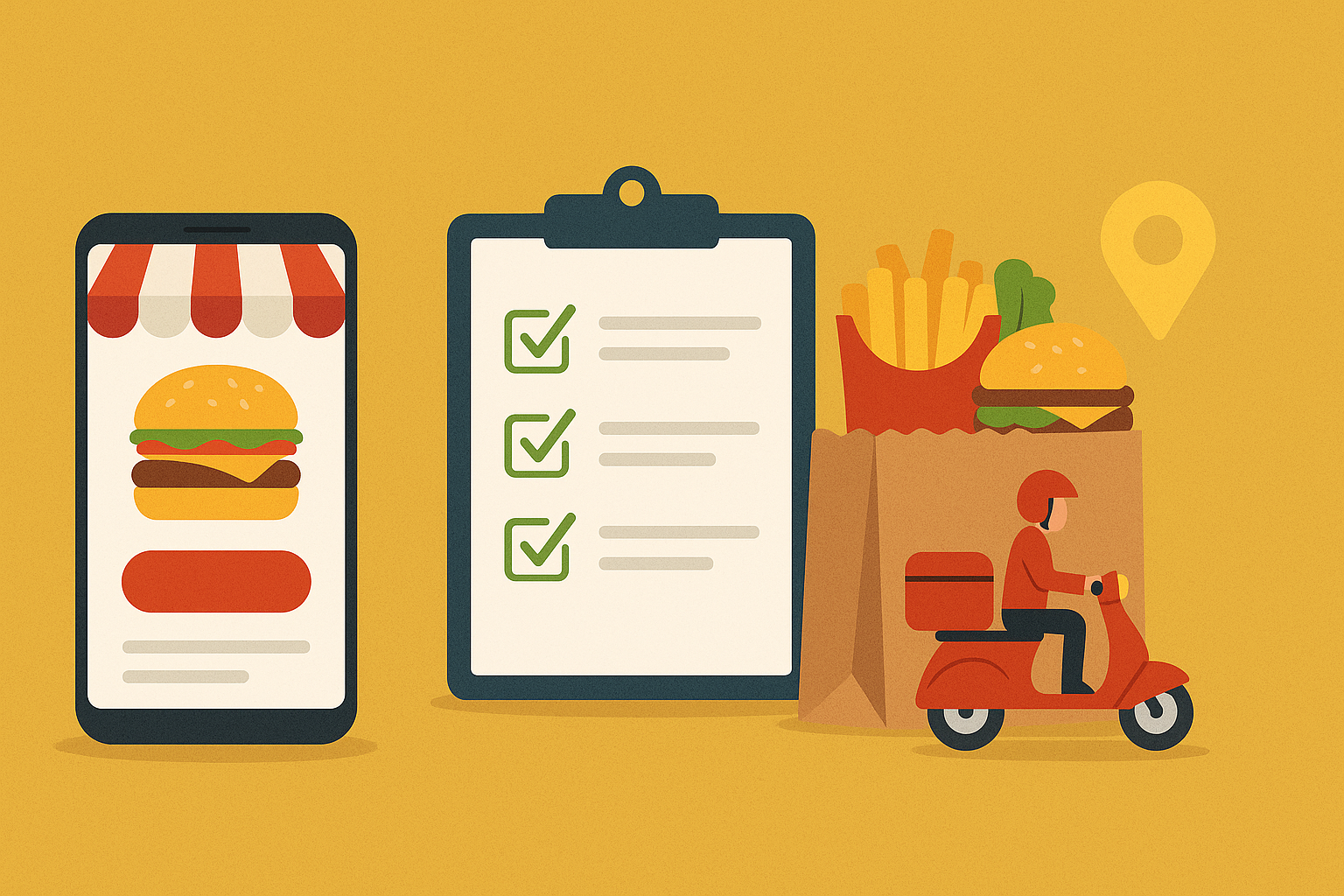Outbound logistics can make or break your business success as a vital component of your supply chain. Did you know that last-mile services alone account for 41% of overall supply chain costs? Much of these costs express why we must pay attention to how products move from our facilities to customers’ hands.
The competitive marketplace demands effective management of finished goods flow. Customer expectations have reached new heights, and solid inbound and outbound logistics processes will give precise order fulfillment, on-time deliveries, and smooth returns. Many supply chain managers face common bottlenecks that prevent peak performance.
Here’s the bright side. Understanding outbound logistics and making strategic improvements can turn this challenging area into a competitive edge. Getting the right product to the right customer, in the right quantity, condition, place, time, and at the right cost (the Seven Rs) isn’t just logistics jargon – these are the foundations of customer satisfaction.
Your search to cut costs, boost efficiency, or improve customer experience ends here. These strategies will help optimize your outbound supply chain and maximize performance.
Understand the Outbound Logistics Process
Your supply chain’s success depends on how well you move finished goods from the warehouse to customers. Let’s look at the basics to make this process work better.
What is outbound logistics?
Outbound logistics covers everything about storing, moving, and delivering finished products from your company to end customers or retailers. The process starts where inbound logistics ends – when raw materials become finished goods ready to sell.
The outbound logistics process has several connected parts:
- Order fulfillment – Processing customer orders, verifying inventory, and initiating picking and packing
- Warehousing and storage – Organizing finished goods to enable quick access and retrieval
- Inventory management – Tracking stock levels and finding the best storage spots for faster processing
- Transportation – Picking the right shipping methods based on product type, distance, and urgency
- Delivery – Making sure orders arrive on time and accurately
- Last-mile delivery – Taking care of the final delivery stretch from distribution centers to customers
Your supply chain’s customer-facing side is outbound logistics, and it affects both satisfaction and your company’s profits.
Key differences from inbound logistics
Inbound and outbound logistics are both vital parts of supply chain management, but they serve different purposes. The main difference lies in what they do:
Inbound Logistics deals with the supply side – bringing raw materials and components into your business. It focuses on procurement, transportation, and receiving goods from suppliers.
Outbound Logistics handles the demand side – moving finished products to customers. It focuses on storage, distribution, and delivery of completed goods.
These operations have different goals. Inbound logistics wants to supply your business with needed materials, while outbound logistics makes sure products reach customers quickly. The costs are different too – inbound relates to buying and receiving, while outbound connects to storage, packing, and shipping to customers.
Why outbound operations matter in supply chains
Good outbound logistics substantially affects your business. It shapes customer satisfaction and your brand’s reputation. Even the best products lose value if deliveries come late, damaged, or wrong.
Well-run outbound operations give you many benefits:
- Faster deliveries that arrive on time
- Fewer order cancellations and returns
- Less damage during shipping
- Lower costs for everyone involved
Professor John J. Coyle’s “Seven Rs” concept captures what makes outbound logistics work: getting the right product to the right customer in the right quantity, condition, place, time, and at the right cost. This framework helps measure how well outbound logistics performs.
Your supply chain’s final step is outbound logistics – it’s your last chance to impress customers. Getting this right does more than fill orders. It builds customer loyalty, boosts your reputation, and gives you an edge in our ever-changing marketplace.
Identify Common Bottlenecks in Outbound Logistics
Supply chains often hit roadblocks that disrupt product delivery to customers, even with careful planning. You can target improvements that matter most by spotting these critical bottlenecks in your outbound logistics.
Inventory mismanagement
Poor inventory control remains one of the costliest outbound logistics challenges. Companies lose over $1 trillion each year from overstocking and understocking. Poor inventory management creates several problems:
- Overstocking locks up capital in excess inventory, drives up storage costs, and risks items becoming obsolete
- Understocking causes stockouts, missed orders, and pushes customers to competitors
- Inaccurate inventory records create gaps between online availability and actual stock levels
About 43% of small businesses never track their inventory. This neglect often results in backorders that delay fulfillment and increase costs. Shipping only available items through partial order fulfillment adds complexity and raises shipping expenses.
Inefficient order processing
Daily and seasonal variations in order fulfillment create inevitable inefficiencies. Warehouse layouts that don’t work well slow down operations from receiving to shipping. Each product handling adds risk for errors and delays.
The number of “touches” (times warehouse workers handle items) links directly to fulfillment accuracy and speed. Extra touches create more chances for human error, mishandling, and wrong product shipments. More handling also increases damage and theft risks while slowing down the entire fulfillment process.
Last-mile delivery delays
Getting products from distribution centers to customers proves the toughest and priciest part of outbound logistics. Last-mile delivery makes up over half of total shipping costs, with packages costing $10-$50 to deliver. Businesses must cover remaining costs to stay competitive.
Bad weather, traffic jams, wrong addresses, and other disruptions hurt customer satisfaction. These delays can trigger order cancellations, returns, or fewer repeat purchases. City congestion slows deliveries, while rural routes need more time and money.
Lack of real-time visibility
Running logistics without clear insight feels like flying blind. Missed opportunities and unhappy customers follow. Supply chain visibility issues usually include:
- Information stuck in departmental silos
- Not knowing how to track warehouse worker productivity
- Limited view of inventory throughout the process
- Poor communication between picking, packing, and putaway tasks
Companies use only 10% of their supply chain data effectively, leaving most unstructured and unused. Poor visibility makes planning harder and slows down responses to delivery problems. Poor communication breaks customer trust and makes it tough to optimize routes based on current conditions.
Spotting these bottlenecks helps create better outbound logistics operations. The next sections explore practical ways to solve each of these challenges.
Step 1: Optimize Inventory and Order Management
The life-blood of successful outbound logistics lies in economical inventory management. Your supply chain can run like a well-oiled machine with the right stock levels and simplified order processing that helps products reach customer doorsteps quickly.
Use an order management system (OMS)
Your outbound logistics operations’ central nervous system is an Order Management System (OMS). This system optimizes order handling from the original capture through shipping and returns. It minimizes manual errors by a lot and improves your supply chain’s visibility by centralizing order data across e-commerce platforms, warehouses, and third-party logistics providers.
An OMS brings several key advantages:
- Higher order accuracy and reduced processing times
- Automated order tracking with status updates
- Simplified returns processing with automatic inventory updates
- Synchronized inventory levels across all sales channels immediately
A good OMS cuts down manual work, removes data silos, and simplifies processes across multiple departments. Your team can focus on strategic improvements instead of repetitive tasks thanks to this automation. The system prevents overselling by letting customers buy only items in stock, which helps avoid fulfillment delays that hurt customer relationships.
Line up inventory with demand forecasts
The foundations of effective inventory planning are forecasts. You can predict demand fluctuations more precisely by exploiting historical sales data, market trends, and seasonal patterns. This knowledge helps maintain optimal stock levels while keeping costs low.
Lining up inventory with demand forecasts offers these benefits:
- Lower safety stock needs and fewer overordering instances
- Smoother production planning across your supply chain
- Better third-party logistics fulfillment timelines
- Fewer last-minute procurement emergencies
Precise demand forecasting shapes inventory planning decisions. These elements help your business keep the right stock levels, improve order timing, reduce waste, and boost overall cash flow. Your operation gets the control and flexibility it needs to react quickly to market signals.
This is especially important for businesses relying on consumer electronics fulfillment services, where high-value items must be delivered accurately and quickly to meet customer expectations.
Reduce stockouts and overstocking
Stockouts and overstocking can get pricey as inventory management failures. Stockouts happen when specific, popular products run out due to supply chain delays. On the flip side, overstocking locks up working capital, raises storage costs, and increases obsolescence risks.
Better inventory accuracy helps prevent stockouts. Workers should scan items during receipt and picking with an inventory management solution to keep your centralized system’s data current.
Safety stock serves as a buffer against supply chain disruptions and surprise demand spikes. The system should also set reorder points – often called inventory’s “golden equation” – to figure out the best replenishment timing:
Reorder Point = (Lead Time × Demand Rate) + Safety Stock
ABC analysis helps fight overstocking by grouping inventory based on sales volume and profitability. This method keeps essential products in stock while reducing excess for slower-moving items.
These inventory optimization strategies will make your outbound logistics processes run smoother and give customers a better experience while improving operational performance.
Step 2: Improve Warehouse and Picking Operations
The speed and accuracy of your outbound logistics operation depends on how products move physically within your warehouse. Your next step should focus on improving item movement through your facility after optimizing inventory systems.
Streamline the outbound process in warehouse
Your warehouse’s outbound operations cover the movement of goods from storage to destination. Several connected activities need to work together naturally. Order processing comes first – your Warehouse Management System (WMS) verifies orders before planning fulfillment.
Fulfillment accuracy and speed relate directly to the number of “touches”. Products handled multiple times create more chances for errors, mishandling, and delays in shipping. Quick operational efficiency needs minimal product handling.
Cross-docking offers another quick solution where receiving departments match incoming inventory to open orders. Workers move products straight from the receiving dock to the outbound truck, which removes storage steps completely.
Implement barcode and RFID tracking
Modern warehouse tracking systems are built on barcode and RFID technologies. Companies using RFID systems have seen amazing results. Their annual inventory variance dropped from $170,000 to just $5,000 in one year, and inventory accuracy improved by 300%.
RFID has clear advantages over regular barcodes:
- Tags can be identified without direct line of sight
- Multiple items can be scanned at once
- Works with stationary, mobile, or worker-carried readers
- Blends with existing ERP and WMS systems
Map your current processes before implementation and start with a pilot program. This approach helps you see what works before scaling up. Your tracking system will blend smoothly with your warehouse’s infrastructure this way.
Use batch and zone picking methods
Zone picking splits your warehouse into distinct sections and assigns pickers to specific areas. This strategy has two forms:
- Sequential zone picking (pick and pass): Orders move through zones on conveyors while each picker adds items from their zone
- Simultaneous zone picking (pick and merge): Workers pick from different zones at once and combine orders later
Zone picking reduces travel time naturally. Pickers become experts with specific products and warehouse congestion decreases too.
Batch picking lets workers collect items for multiple orders at once by following the best pick path. Workers avoid visiting the same location repeatedly, which cuts travel time by a lot. Many operations find a mix of zone and batch methods works best. Workers can pick several orders within their assigned zones efficiently.
WMS software helps create efficient order batches and picking routes based on your warehouse’s layout for the best results.
Step 3: Upgrade Transportation and Delivery Systems
Transportation connects your warehouse to customers and serves as the final piece of your outbound logistics chain. Your supply chain efficiency depends on delivery systems after you optimize inventory management and picking operations.
Choose the right freight forwarding company
You need to review several factors to find the perfect freight forwarding company to partner up with:
- List your specific requirements like shipping modes, types of goods, and special handling needs
- Review services beyond simple shipping (packaging, labeling, route optimization)
- Check their expertise with your shipping routes and destinations
- Confirm their financial stability and bonding status to avoid delays
Use route optimization tools
Route optimization software substantially improves transportation efficiency in your outbound logistics process. These systems analyze multiple variables and find the most budget-friendly delivery paths that reduce fuel consumption by 15-25%. The best tools come with GPS tracking capabilities that provide immediate visibility into shipment status and transportation costs. You should look for solutions that combine smoothly with your existing management systems and support mobile access for drivers.
Track last-mile delivery performance
Last-mile delivery makes up 53% of total shipping costs, so tracking performance helps optimize outbound logistics. Your key metrics should include on-time delivery rates (target 95% or higher), average delivery time, and cost per delivery. Real-time tracking systems spot inefficiencies, cut costs, and boost customer satisfaction through better visibility.
Conclusion
Your outbound logistics operations play a vital role in supply chain success in today’s competitive marketplace. This piece explores practical steps to turn this critical component into a real competitive advantage.
Understanding the key differences between inbound and outbound logistics shows why these customer-facing processes need special attention. Outbound logistics affects customer satisfaction, brand reputation, and ends up impacting your bottom line.
Each improvement adds to previous ones and creates a naturally integrated outbound logistics system. Small changes add up to deliver amazing results – faster deliveries, fewer returns, lower costs, and satisfied customers.
These strategies help transform outbound logistics from an operational challenge into a business advantage. Your supply chain’s ability to deliver the right product to the right customer, in the right quantity, condition, place, time, and cost will without doubt become your edge in meeting growing customer expectations.
Published: October 1, 2025





